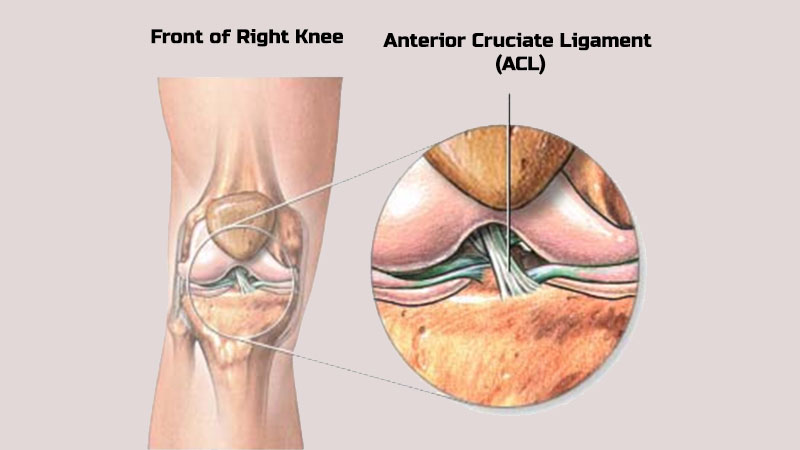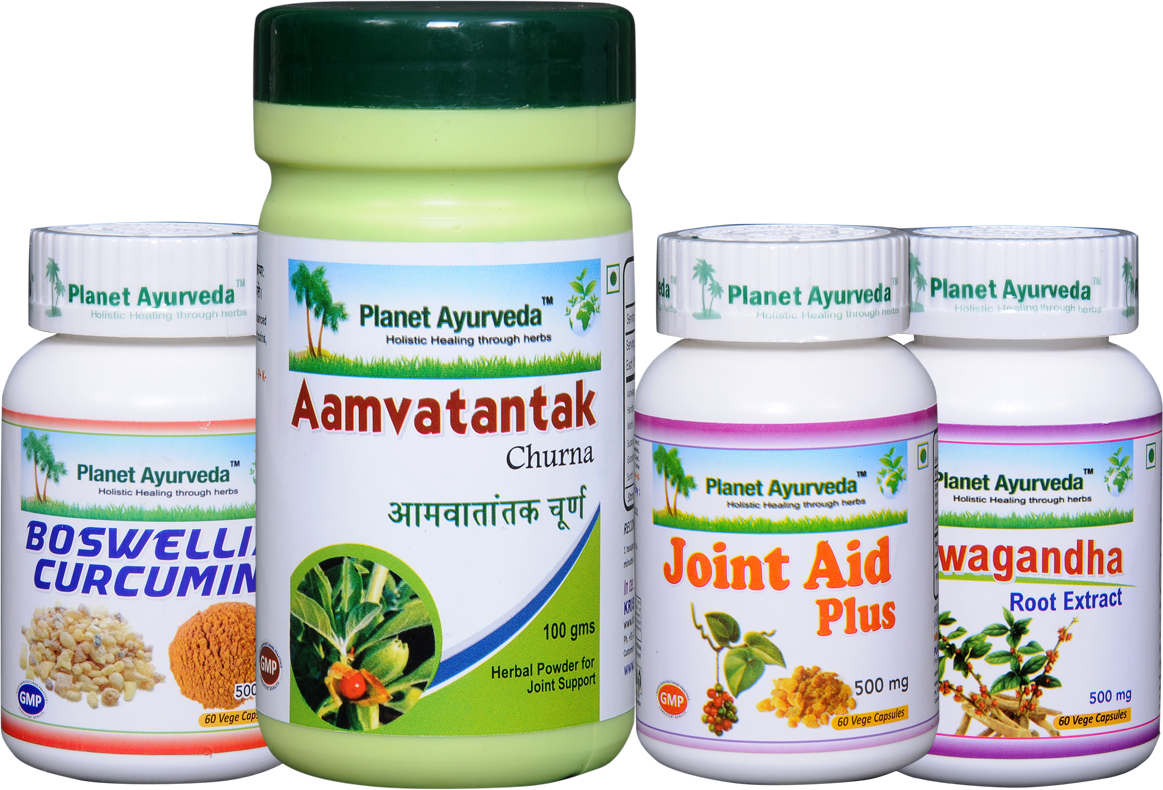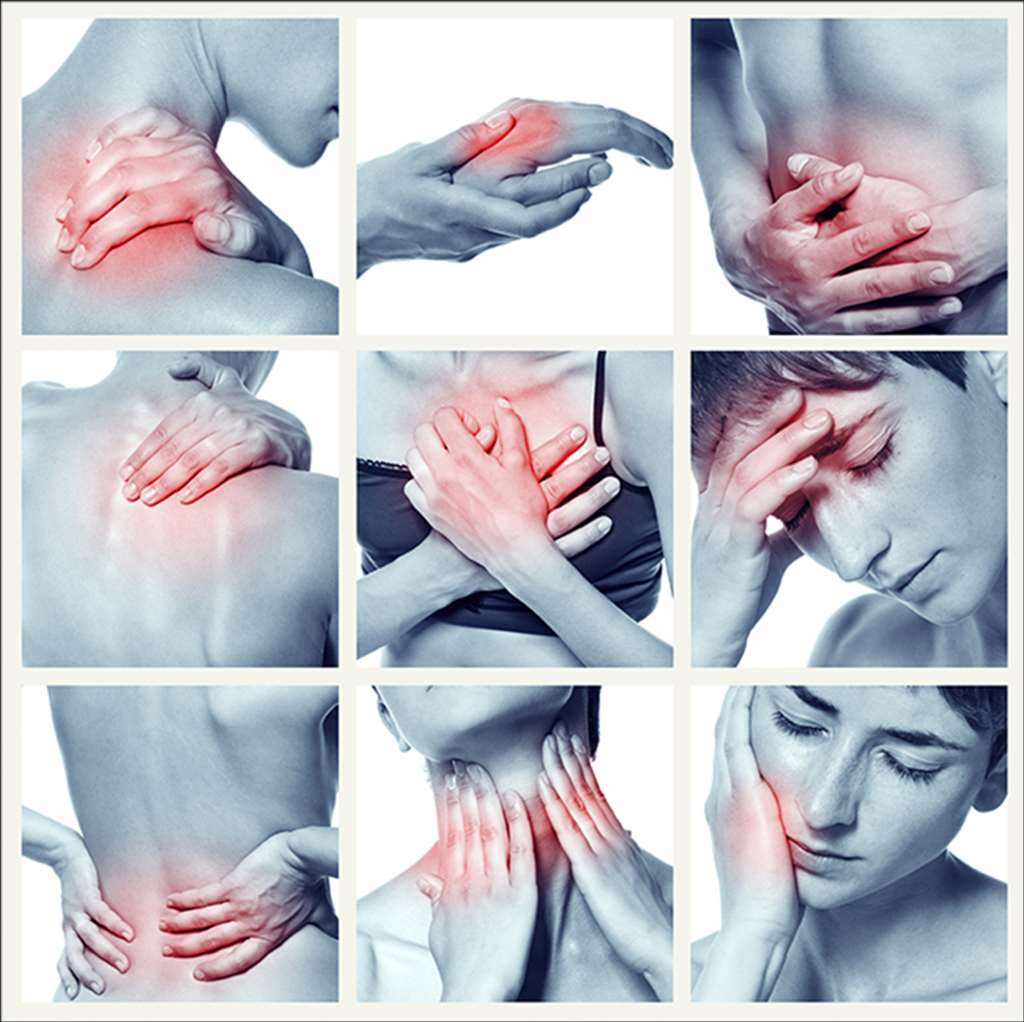Ayurvedic Treatment of Anterior Cruciate Ligament Injury
Overview
Anterior cruciate ligament injury is defined as the tearing or injury of the one of the major ligament that supports and controls movements of our knee joint. Usually acute cruciate ligament injury is major combination of severe damage of ligaments and bones that are linked with our knee joint. You can hear a loud popping sound in the knee during this injury.Usually knee joint ligaments are mostly injured by indirect twisting and bending of the knee joint. So, athletes and players of soccer, football, high jump and gymnastics are at the major risk of this disease. Depending upon the severity of injury, it is divided into three different grades. In grade 1, injury ligament is slightly stretched or mildly damaged with local tenderness and but the ligament is still capable to stable knee joint. In grade 2, ligament with more disruption and no instability but in grade 3, there is total damage of ligament occurs.

Knee joint is totally disrupted and ligament is divided into two pieces.Femur (thigh bone), tibia (shin bone) and patella (knee cap) are the three major bones of our body that are joined together to make our knee joint. Patella is the major bone that sits over front of all the bones to provide protection and to make balance of knee joint. All these bones are connected to each other with the help of ligaments. These ligaments act as a strong connection and support between all these bones. In the same way, collateral and cruciate are the two major ligaments that support our knee joint. Ligaments that are found on the sides of the knee joint are called as collateral ligaments. These ligaments further divided into two types- medial ligament (this ligament is situated inside) and lateral ligament (this ligament is situated outside). Ligaments that are found inside the knee joint is called cruciate ligament. Anterior cruciate ligament inside the knee joint is found in the front side while posterior cruciate ligament is placed in back inside the knee joint. These ligaments inside our knee joint helps to control the movements.
Ayurvedic Outlook
According to Ayurveda, snayu is word that refers to ligaments. Snayu and kandra are very important to perform very crucial functions and movements of joints in the body. Ligament damage is correlated with sandhigatavata according to Ayurveda. External abhighata (injury) in the knee joint leads to rasa, raktadidoshadushti and vataprakopa leads to the vikurti of sandhi, snayu, asthi and kandra of knee joint. Rupture of sanyu is responsible for stiffness, difficulty in movements and also causes severe inflammation and pain.
Causes
This type of injury occurs due to many different reasons that include
- Direct contact with an object like football etc.
- Sudden stopping while running
- High jumping
- Rapid direction changing
- Sudden stopping while running
Symptoms
The major typical symptoms of anterior cruciate ligament injury include
- Killing pain
- Excessive inflammation
- Loss of movements
- Severe tenderness
- Walking discomfort
Herbal Remedies for Treating Anterior Cruciate Ligament Injury
According to Ayurveda, herbal formulation and natural herbs are very effective for treating joints related problems. Herbs help in faster healing and give miraculous results with causing any side effects to other organs of the body. Planet Ayurveda provides you amazing and herbal supplements to treat this problem associated with the knee joint naturally. All these herbal supplements are free from preservatives, chemicals, binders, additives, starch and yeast. These herbal formulations are totally safe and have no any side effects. Various herbal formulations for this disorder include
1. Boswellia Curcumin Capsules
Boswellia and curcumin are the major anti inflammatory herbs used to prepare this wonderful herbal formulation of Planet Ayurveda. Boswellic acid present in shallaki is very effective anti-inflammatory that helps to reduce excessive stiffness and inflammation of joints. Turmeric is major herb of Ayurveda that helps to treat various joint related disorders. Regular use of this herbal supplement is also helpful in treating other vata dosha related problems in body like gout, arthritis, rheumatoid etc. Both the herbs are good for promoting healthy movements of joints. Curcumin is natural anti-oxidant that helps to stimulate our immune system and give strength to our body cells to fight against foreign invaders. Both the herbs help to fight against various harmful toxins and free radicals that are major cause of internal infections and excessive inflammation. This herbal supplement helps to pacify vitiated vata dosha in the body.
Dosage :- 2 capsules two times a day after meals with normal water.
2. Ashwagandha Capsules
Pure extract of herb, ashwagandha is used to prepare this beneficial supplement of Planet Ayurveda. Ashwagandha is the major herb of Ayurveda that is well known for its restoring properties and immune system boosting effects. Indian ginseng is the common name of ashwagandha and it is very effective herb to improve our internal strength and immunity. Regular use of this herbal supplement helps to reduce excessive pain and inflammation of knee joints due to its anti-inflammatory properties. Bioactive compounds present in this herb is also known for treating anxiety and stress. This herbal supplement also have strong action on testosterone and helps to promote fertility in men. This herb is also very effective remedy for bones and also used to increase muscle mass. Regular intake of this herbal supplement also helps to improve brain function and good to reduce high blood pressure and glucose level in the body.
Dosage :- 2 capsules two times a day after meals with normal water.
3. Joint Aid Plus
Joint aid plus is again unique blend of various anti-inflammatory herbs of Ayurveda. Nirgundi, shallaki, ashwagandha, guggul and the sonth are the various herbs used to prepare this herbal formulation for bones and joints. Nirgundi is the amazing herb of Ayurveda that is anti-arthritic in nature. Anti-inflammatory properties of shallaki and ashwagandha helps aid with joint inflammation and pain. Regular intake of this herbal supplement is also very beneficial for treating other disorders associated with joints and bones.
Dosage :- 2 capsules two times a day after meals with normal water.
4. Aamvatantak Churna
Major cause of serious joint and bone related problems in Ayurveda is vata dosha. This powerful blend prepared by Planet Ayurveda works on vitiated dosha and protects our bones and joints from harmful effects of vata dosha. Aamvantantak churna is fine blend of ashwagandha, methi, suranjaan, gorkhmundi, haridra and sonth. All the herbs used in this fine powder are analgesic, anti-inflammatory, anti-oxidant and immune-modulator in nature. This herbal supplement helps to nourish and strengthen our bones and joints. This herbal formulation fight against harmful toxins and protect our body cells from the harmful effects of inflammation. It is also very useful for treating gout and rheumatoid.
Dosage :- 1 tablespoonful two times a day after meals with normal water.



